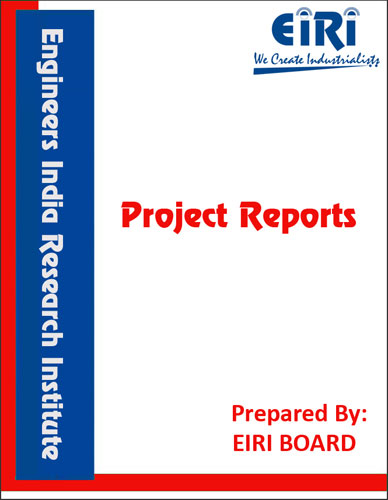SOLVENT BLUE 35
The project report includes Present Market Position and Expected Future Demand, Market Size, Statistics, Trends, SWOT Analysis and Forecasts. Report provides a comprehensive analysis from industry covering detailed reporting and evaluates the position of the industry by providing insights to the SWOT analysis of the industry.
We can prepare PROJECT REPORT as per your INVESTMENT PLAN for BANK LOAN REQUIREMENT and INDUSTRY ANALYSIS. All reports are prepared by highly qualified consultants and verified by a panel of experts.
Have Query? Click Here to Chat
Industry Expert is Online, Chat with him for more detail.

The synthetic dye industry was founded in 1857 by W.H. Perkin in setting up a factory at Green ford Green near London, for the manufacture of mauveine from coal tar benzene. However, more synthetic dyes followed as organic chemistry itself grew rapidly in the research schools of Europe and the countries.
Now-a-days, almost all dyes are derived synthetically i.e. by known steps, from raw materials principally the hydrocarbons, benzene, toluene, naphthalene and quthracene obtained from coal tar produced by distillation of coal and/or contact with air and also to an increasing extent, from certain operations in the petroleum industry. These hydrocarbons, known as aromatic hydrocarbon, provide the molecular framework for the final
dye molecule, such aromatic nuclei or other conjugated systems being essential to the structures of substances having the property colour.
The Indian dyestuffs and pigments industry has transformed from being import dependent to an export driven industry. Developed countries are now focusing on sourcing dyestuffs and pigments from cost-effective Asian markets, owing to stringent measures taken on environmental issues back home. Exports have grown in double digit over the last few years.
The Indian dyestuff industry which was primarily established to meet the requirements of the textile industry has now expanded catering to several end user segments such as printing, leather; construction and automobile sectors. Some of the restraints for the industry are raw material volatility as well as environmental concerns.
INTRODUCTION
USES AND APPLICATION
PROPERTIES OF SOLVENT BLUE 35
B.I.S. SPECIFICATION
CLASSIFICATION OF SOLVENT DYES
A) ALCOHOL- AND ESTER-SOLUBLE DYES
B) FAT- AND OIL-SOLUBLE DYES
CHEMISTRY OF ANTHRAQUINONE SOLVENT DYES
THE CHEMISTRY OF ANTHRAQUINONE
ANTHRAQUINONE SOLVENT DYES FOR POLYMERS
STRUCTURE AND PROPERTIES OF OIL BLUE 35
PRODUCT IDENTIFICATION
PHYSICAL AND CHEMICAL PROPERTIES
STABILITY AND REACTIVITY
MEMBERS OF ANTHRAQUINONE SOLVENT DYES
TECHNICAL DATA SHEET OF SOLVENT BLUE 35
MARKET SURVEY
DEMAND – SUPPLY
GOVERNMENT POLICIES
INPUT – RELATED RISK
EXTENT OF COMPETITION
OVERVIEW OF THE GLOBAL DYES AND PIGMENTS MARKET
PRODUCTION OF SOLVENT DYES
PRESENT MANUFACTURERS OF SOLVENT BLUE 35
MANUFACTURING PROCESS OF SOLVENT BLUE 35
FORMULATION: BATCH SIZE: 1100 KGS
MATERIAL SAFETY DATA SHEET OF SOLVENT BLUE 35
COMPOSITION/INFORMATION ON INGREDIENTS
HAZARDS IDENTIFICATION
FIRST AID MEASURES
FIRE FIGHTING MEASURES
ACCIDENTAL RELEASE MEASURES
HANDLING AND STORAGE
EXPOSURE CONTROLS / PERSONAL PROTECTION
PHYSICAL AND CHEMICAL PROPERTIES
STABILITY AND REACTIVITY
TOXICOLOGICAL INFORMATION
DISPOSAL CONSIDERATIONS
TRANSPORT INFORMATION
WASTE CHARACTERISTICS, PREVENTION AND CONTROL
POLLUTION PREVENTION AND CONTROL
TARGET POLLUTION LOADS
TREATMENT TECHNOLOGIES
EMISSIONS GUIDELINES
MONITORING AND REPORTING
KEY ISSUES
PRINCIPLES OF PLANT LAYOUT
PLANT LOCATION FACTORS
EXPLANATION OF TERMS USED
IN THE PROJECT REPORT
PROJECT IMPLEMENTATION SCHEDULES
PLANT LAYOUT
SUPPLIERS OF RAW MATERIALS
SUPPLIERS OF PLANT AND MACHINERY
APPENDIX – A:
1. COST OF PLANT ECONOMICS
2. LAND & BUILDING
3. PLANT AND MACHINERY
4. FIXED CAPITAL INVESTMENT
5. RAW MATERIAL
6. SALARY AND WAGES
7. UTILITIES AND OVERHEADS
8. TOTAL WORKING CAPITAL
9. COST OF PRODUCTION
10. PROFITABILITY ANALYSIS
11. BREAK EVEN POINT
12. RESOURCES OF FINANCE
13. INTEREST CHART
14. DEPRECIATION CHART
15. CASH FLOW STATEMENT
16. PROJECTED BALANCE SHEET



